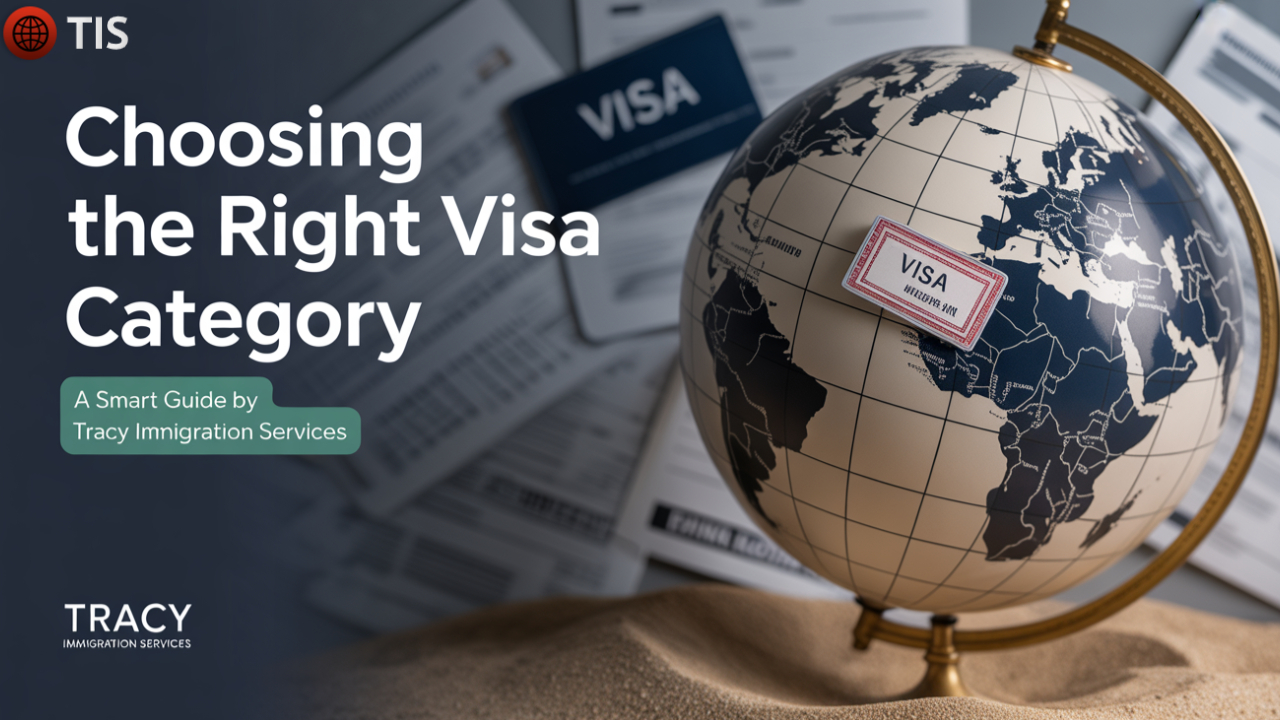
The U.S. immigration system provides numerous pathways for individuals, families, and businesses.
Selecting the correct visa category is critical — a well-chosen category can streamline your
application and set the foundation for long-term success.
Why the Right Visa Category Matters
Choosing the wrong category can result in unnecessary costs, complications, or even denials.
At Tracy Immigration Services, we assist employers, professionals, and families
in navigating these choices with clarity and confidence.
1. Define the Purpose of Immigration
Each visa category serves a specific purpose. Identifying your primary goal is the first step:
-
Employment-Based Visas — (H-1B, O-1, L-1, EB categories): For U.S. employers
hiring skilled professionals or companies transferring employees. -
Family-Based Visas — For U.S. citizens or permanent residents sponsoring
close relatives. - Student Visas — (F-1, M-1): For academic or vocational studies in the United States.
-
Investor and Business Visas — (E-2, EB-5): For entrepreneurs and investors
contributing to the U.S. economy.
Clarity of purpose ensures that the visa type aligns with your immediate and long-term objectives.
2. Consider Short-Term and Long-Term Goals
Applicants must distinguish between temporary stays and permanent relocation:
- Temporary stays: Best suited for nonimmigrant visas such as H-1B, L-1, or F-1.
-
Permanent residency: More appropriate for immigrant visas, including family-sponsored
green cards or employment-based EB categories.
Taking future plans into account allows you to build an immigration strategy that is sustainable and aligned with your ambitions.
3. Assess Eligibility Criteria
Every visa category comes with defined eligibility standards. Examples include:
- H-1B: Requires a sponsoring U.S. employer and a specialty occupation.
- O-1: Reserved for individuals with extraordinary achievements.
- L-1: For multinational companies transferring executives or specialized employees.
- EB-5: Requires a qualifying investment and job creation in the U.S.
Evaluating eligibility early prevents unnecessary applications and increases the likelihood of approval.
4. Review Processing Times and Costs
Processing times and associated costs vary significantly by visa category. Key factors to evaluate include:
- USCIS filing fees and attorney costs.
- Availability of premium processing to expedite decisions.
- Demand levels for specific visas, particularly those subject to annual caps.
Employers and applicants who plan ahead can better manage expectations and resources.
5. Seek Professional Guidance
U.S. immigration law is complex and constantly evolving. Attempting to navigate it without professional
assistance often leads to delays, denials, and unnecessary expenses. Partnering with an experienced
immigration services provider ensures that you select the visa category that best matches your qualifications
and long-term goals.
Conclusion
Selecting the right visa category is more than an administrative step — it is a strategic decision that shapes
your immigration journey. Whether you are an employer seeking international talent or an individual pursuing new opportunities,
making the correct choice at the outset is critical to success.
At Tracy Immigration Services, we provide personalized guidance to help you choose the right
pathway and prepare a strong, well-documented application. Our expertise ensures that your immigration process moves
forward efficiently and with confidence.
Contact Tracy Immigration Services
Contact Tracy Immigration Services today
to begin your journey with trusted, professional support.

